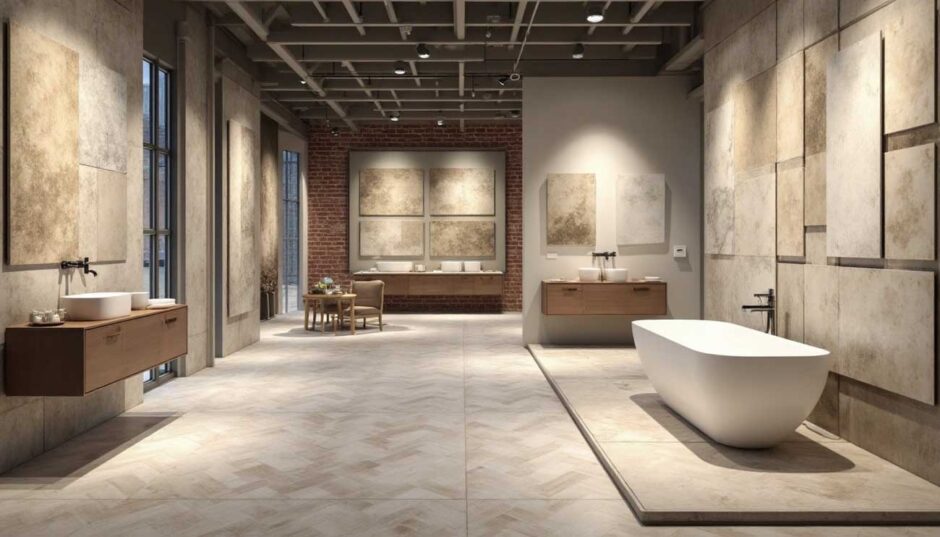Ever heard of sodiceram and wondered what it is? You’re not alone. This buzzword is catching on in the creative and ceramic-making communities—and for good reason.
Sodiceram blends old-school pottery with a modern twist. Think handmade clay pieces brought to life with digital designs, custom textures, and one-of-a-kind finishes. It’s a whole new way to express yourself through ceramics. In this guide, we’ll walk you through exactly what sodiceram is, how you can make it yourself, and how to personalize your creations to make them truly yours.
What Exactly Is Sodiceram?
At its core, sodiceram is a mix of two ideas: sodium-based glazes and traditional ceramics. It’s a style of pottery that allows artists to craft unique, functional pieces—then add texture, color, and custom designs using sodium vapor and modern techniques.
Unlike typical ceramics that follow rigid steps, sodiceram gives you freedom to experiment:
- Want a bold, glassy finish? Add soda vapor during firing.
- Prefer something matte and rustic? Adjust your kiln settings and watch the transformation.
- Love tech? You can even transfer digital images or engrave patterns with laser tools.
It’s all about making ceramics that reflect you—your style, your vision.
How to Make Sodiceram (Even If You’re a Beginner)
The best part about sodiceram? You don’t need to be a pottery expert to start. If you’ve ever shaped clay before—or even if you haven’t—this guide will help you take your first step.
Step 1: Gather What You Need
Here’s a basic checklist:
- A good stoneware or porcelain clay (these can handle the high heat)
- Sodium carbonate or baking soda (for that “sodi” effect)
- A pottery wheel or hand-building tools
- A kiln (gas is preferred, but electric works too)
- Optional: A decal printer, carving tools, or laser engraver
Step 2: Shape Your Clay
Start by shaping your piece the way you want it. Use a wheel to throw a bowl or mug—or build by hand if you’re going for something more abstract or sculptural. Don’t worry about perfection. The beauty of sodiceram lies in its organic, slightly unpredictable results.
Step 3: Apply the Sodium
Here comes the fun part. There are two ways to do this:
- Spray or paint the sodium mix onto your piece before firing.
- Or, introduce it into the kiln’s atmosphere during the firing process.
The sodium reacts with the silica in your clay, creating a natural glaze. No two results are the same, which is part of the magic.
Step 4: Fire It Up
You’ll want to fire your piece to cone 10—that’s around 1300°C (2372°F). This is when the real transformation happens. The sodium vapor creates beautiful surface effects, from glossy waves to crystallized glazes.
How to Customize Sodiceram (So It’s Uniquely Yours)
Now that your piece is formed and fired, it’s time to personalize it. There are plenty of ways to do this, depending on your style and what tools you have.
1. Add a Personal Touch with Digital Transfers
You can print artwork or quotes on decal paper, apply it to your piece, and refire at a low temperature to fuse the image onto the ceramic. This works great for:
- Custom mugs
- Commemorative gifts
- Logo branding
Want more DIY decor ideas? Don’t miss our post on home personalization.
2. Carve or Etch Your Design
Before you glaze or fire, you can etch patterns or textures into your clay using simple carving tools—or go high-tech with a laser engraver.
Think:
- Modern geometric lines
- Names or messages
- Floral designs
3. Experiment with Glazes and Reactions
You’re not stuck with one glaze. Try:
- Reactive glazes that shift color in the kiln
- Layered finishes that change depending on sodium exposure
- Oxide washes for earthy, moody effects
Some artists even use design software to preview how their glazes will react—combining tech and craft.
4. Create Unusual Forms
You don’t have to stick to bowls and cups. Use molds, 3D shapes, or even puzzle-like designs to create:
- Modular plates
- Abstract wall tiles
- Interlocking vases
Let your imagination lead here. The form is just as important as the surface.
Why More Creators Are Choosing Sodiceram
Here’s why sodiceram is showing up in studios, marketplaces, and Instagram feeds:
- Personalization: Every piece is different, even when made from the same base.
- Creative Control: You decide the shape, the texture, the finish—and no two pieces come out the same.
- Sustainability: Some methods reduce the need for harsh glazes, making it more eco-friendly.
Looking for inspiration? Check out the Ceramic Arts Network—it’s a treasure trove of ideas and professional techniques.
Tips for New Sodiceram Makers
If you’re just starting out, here are a few tried-and-true tips:
- Start Small: Make test tiles before jumping into large projects.
- Take Notes: Track your kiln temps, glazes, and techniques so you can repeat your successes.
- Stay Safe: Soda firing creates fumes, so make sure your workspace is ventilated.
- Get Feedback: Share your work with local makers or online communities like Reddit’s r/Ceramics.
Conclusion
Sodiceram is more than just a new craft—it’s a creative playground. With a little clay, some heat, and your imagination, you can make ceramic pieces that are beautiful, functional, and totally personal.
Whether you want to sell your work, gift it, or simply enjoy a creative outlet, sodiceram gives you the freedom to make it your way.
🎨 Ready to try sodiceram yourself? Start with a small bowl or tile, experiment with textures, and share your creations with us at FlashyMagazine.com. Who knows? You might just fall in love with the process.
